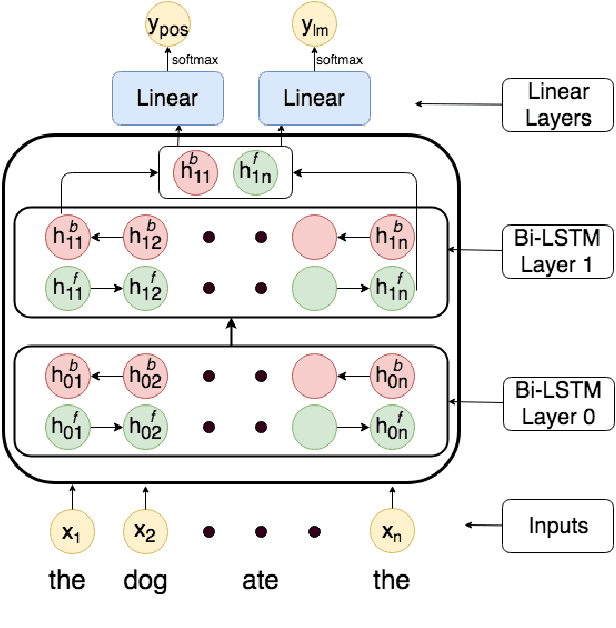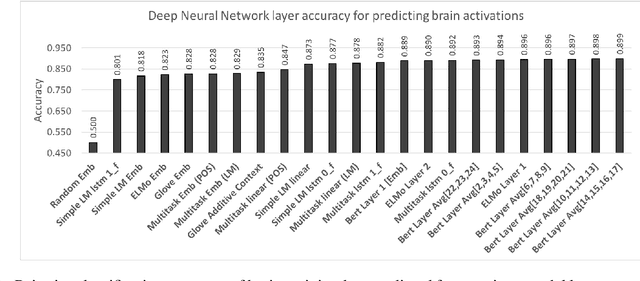Relating Simple Sentence Representations in Deep Neural Networks and the Brain
Paper and Code
Jun 27, 2019



What is the relationship between sentence representations learned by deep recurrent models against those encoded by the brain? Is there any correspondence between hidden layers of these recurrent models and brain regions when processing sentences? Can these deep models be used to synthesize brain data which can then be utilized in other extrinsic tasks? We investigate these questions using sentences with simple syntax and semantics (e.g., The bone was eaten by the dog.). We consider multiple neural network architectures, including recently proposed ELMo and BERT. We use magnetoencephalography (MEG) brain recording data collected from human subjects when they were reading these simple sentences. Overall, we find that BERT's activations correlate the best with MEG brain data. We also find that the deep network representation can be used to generate brain data from new sentences to augment existing brain data. To the best of our knowledge, this is the first work showing that the MEG brain recording when reading a word in a sentence can be used to distinguish earlier words in the sentence. Our exploration is also the first to use deep neural network representations to generate synthetic brain data and to show that it helps in improving subsequent stimuli decoding task accuracy.
 Add to Chrome
Add to Chrome Add to Firefox
Add to Firefox Add to Edge
Add to Edge